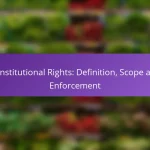In the evolving landscape of voter rights, technology plays a crucial role in addressing access barriers that hinder participation in elections. Solutions such as online voter registration, accessible voting machines, and vote-by-mail options are designed to create a more inclusive electoral process. However, challenges remain, particularly with voter ID laws that can disproportionately affect certain populations. By leveraging technology, we can enhance the accessibility, security, and efficiency of voting, ensuring that every eligible voter has the opportunity to make their voice heard.
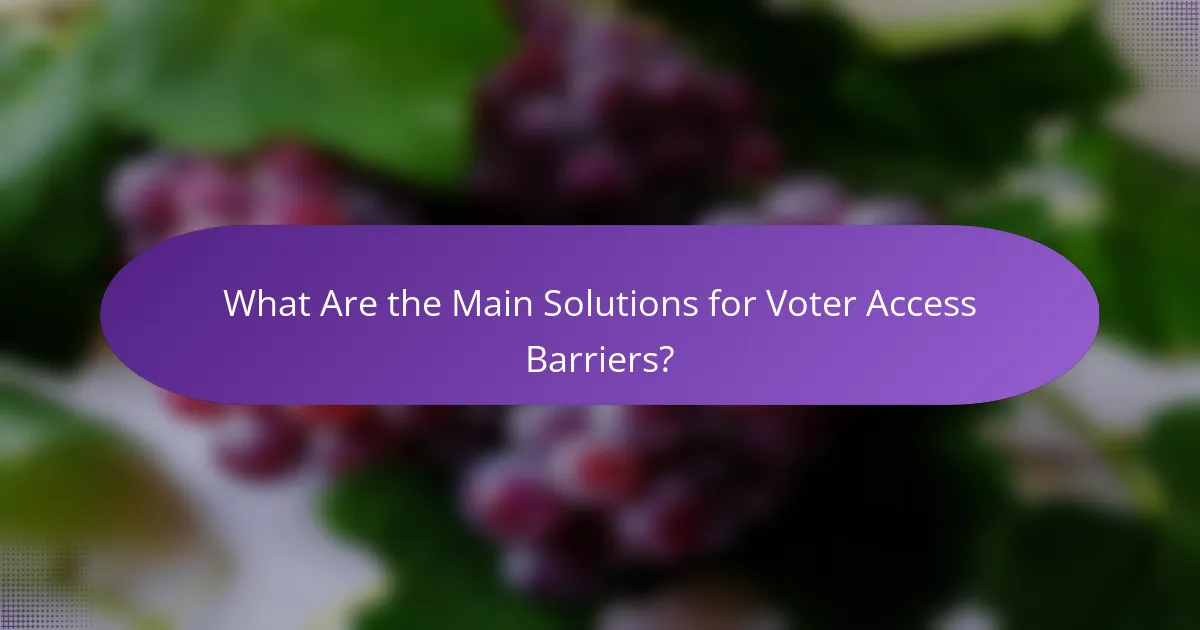
What Are the Main Solutions for Voter Access Barriers?
Key solutions for voter access barriers include online voter registration, accessible voting machines, extended voting hours, vote-by-mail options, and community outreach programs. These strategies aim to enhance participation by making the voting process easier and more inclusive for all eligible voters.
Online Voter Registration
Online voter registration allows eligible citizens to register to vote via the internet, streamlining the process. This method is particularly effective in reducing paperwork and the need for in-person visits to registration offices.
Many states have implemented secure online systems that require basic personal information and identification verification. It’s important to check your state’s specific requirements and deadlines for online registration to ensure you are registered in time for elections.
Accessible Voting Machines
Accessible voting machines are designed to accommodate individuals with disabilities, ensuring they can cast their votes independently and privately. These machines may include features like audio instructions, tactile buttons, and adjustable screens.
Polling places are required to provide accessible voting options, but voters should verify in advance that their local polling station has the necessary equipment. Advocating for better accessibility can also help improve options in future elections.
Extended Voting Hours
Extended voting hours allow voters more flexibility to cast their ballots outside of traditional working hours. This solution can significantly increase participation, especially for those with demanding jobs or family obligations.
States may offer early voting days or extended hours on Election Day. Voters should check local election office websites for specific hours and locations to ensure they can take advantage of these options.
Vote-by-Mail Options
Vote-by-mail options enable voters to receive and submit their ballots through the mail, making it easier for those who may have difficulty accessing polling places. This method can enhance voter turnout, particularly among those with mobility issues or those living in remote areas.
Voters should be aware of their state’s rules regarding mail-in ballots, including application deadlines and submission methods. Ensuring your ballot is mailed early can help avoid issues with timing and delivery.
Community Outreach Programs
Community outreach programs aim to educate and assist voters, particularly in underserved areas. These initiatives can include workshops, informational sessions, and partnerships with local organizations to raise awareness about voting rights and access options.
Engaging with community leaders and organizations can help spread the word about available resources and support, ultimately fostering a more informed electorate. Participating in or supporting these programs can make a significant difference in voter engagement.
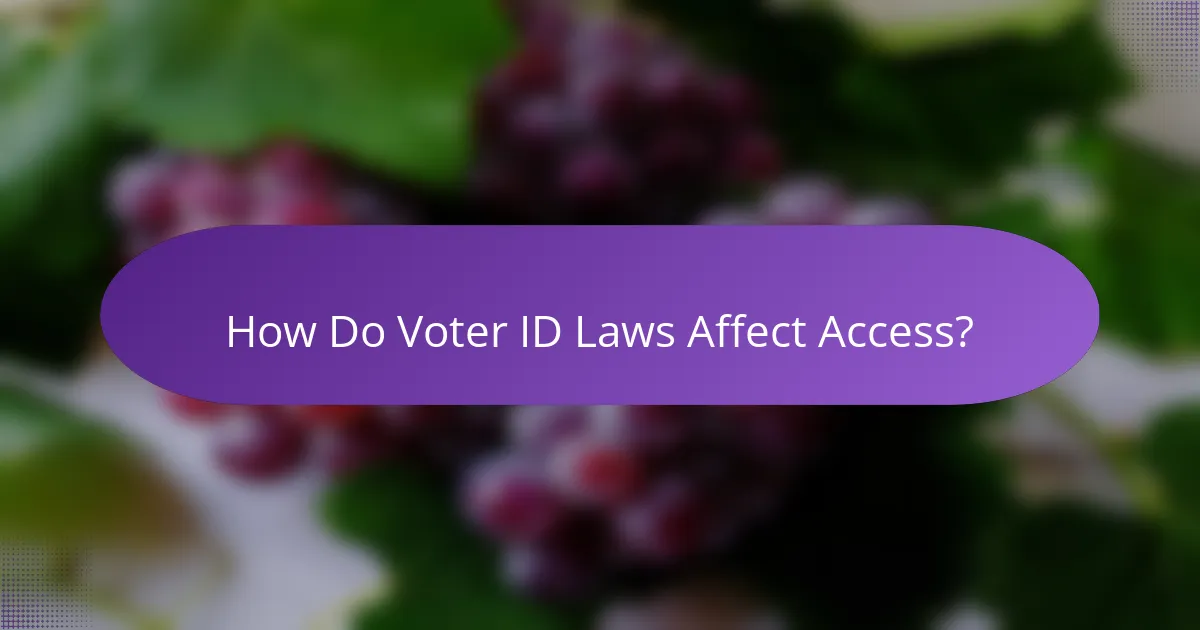
How Do Voter ID Laws Affect Access?
Voter ID laws can significantly impact access to the electoral process by requiring individuals to present specific forms of identification to vote. These laws can create barriers for some voters, particularly those who may not possess the required IDs or who face challenges in obtaining them.
Strict ID Requirements
Strict ID requirements mandate that voters present government-issued identification, which can include driver’s licenses, passports, or state-issued IDs. In some states, voters without these IDs may be required to provide additional documentation or face restrictions on their ability to vote.
For example, states like Indiana and Georgia have implemented stringent ID laws that can limit access for individuals who do not have the necessary identification. This can lead to confusion and disenfranchisement, particularly among those who may not have easy access to ID-issuing offices.
Impact on Minority Voters
Voter ID laws disproportionately affect minority voters, who are statistically less likely to possess the required forms of identification. Studies have shown that these laws can lead to lower turnout rates among African American, Hispanic, and low-income populations.
In many cases, minorities may face additional barriers, such as lack of transportation to ID-issuing offices or financial constraints that make obtaining an ID difficult. This can exacerbate existing inequalities in voter participation and representation.
Legal Challenges to ID Laws
Legal challenges to voter ID laws often focus on claims that these laws violate the Voting Rights Act or disproportionately disenfranchise specific groups. Courts have examined various cases, leading to some laws being struck down or modified.
For instance, in 2016, a federal court ruled against North Carolina’s voter ID law, citing its discriminatory impact on minority voters. Ongoing litigation continues to shape the landscape of voter ID laws, with advocates pushing for more accessible voting options.
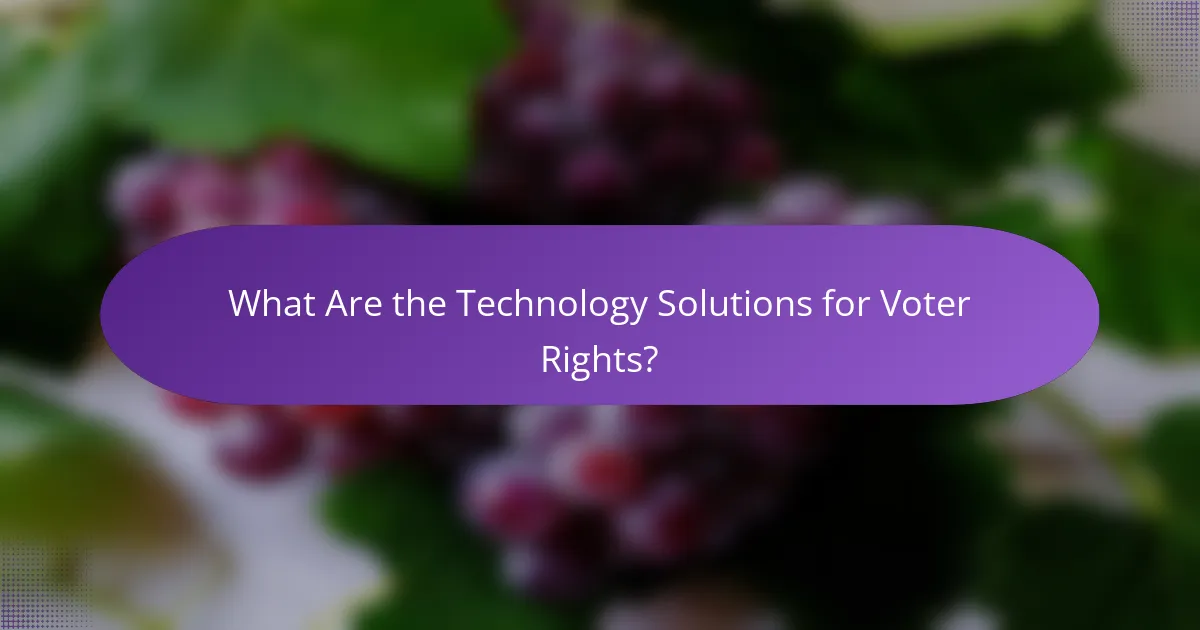
What Are the Technology Solutions for Voter Rights?
Technology solutions for voter rights aim to enhance accessibility, security, and efficiency in the voting process. These innovations can help eliminate barriers that prevent eligible voters from participating in elections.
Blockchain Voting Systems
Blockchain voting systems utilize decentralized technology to ensure secure and transparent elections. Each vote is recorded as a block in a chain, making it nearly impossible to alter or delete once cast.
These systems can improve voter confidence by providing a verifiable audit trail. However, implementation requires significant investment in technology and education to ensure all voters understand how to use the system effectively.
Mobile Voting Applications
Mobile voting applications allow voters to cast their ballots using smartphones or tablets, increasing convenience and accessibility. These apps can be particularly beneficial for individuals with disabilities or those living in remote areas.
While mobile voting can enhance participation, it raises concerns about security and privacy. Ensuring robust encryption and authentication methods is crucial to protect voter information and maintain election integrity.
Accessibility Features in Voting Technology
Accessibility features in voting technology include options like audio ballots, large print interfaces, and assistive devices for individuals with disabilities. These features help ensure that all voters can understand and participate in the electoral process.
Election authorities should prioritize the integration of these features into voting systems. Regular testing with diverse user groups can help identify potential barriers and improve usability for everyone.
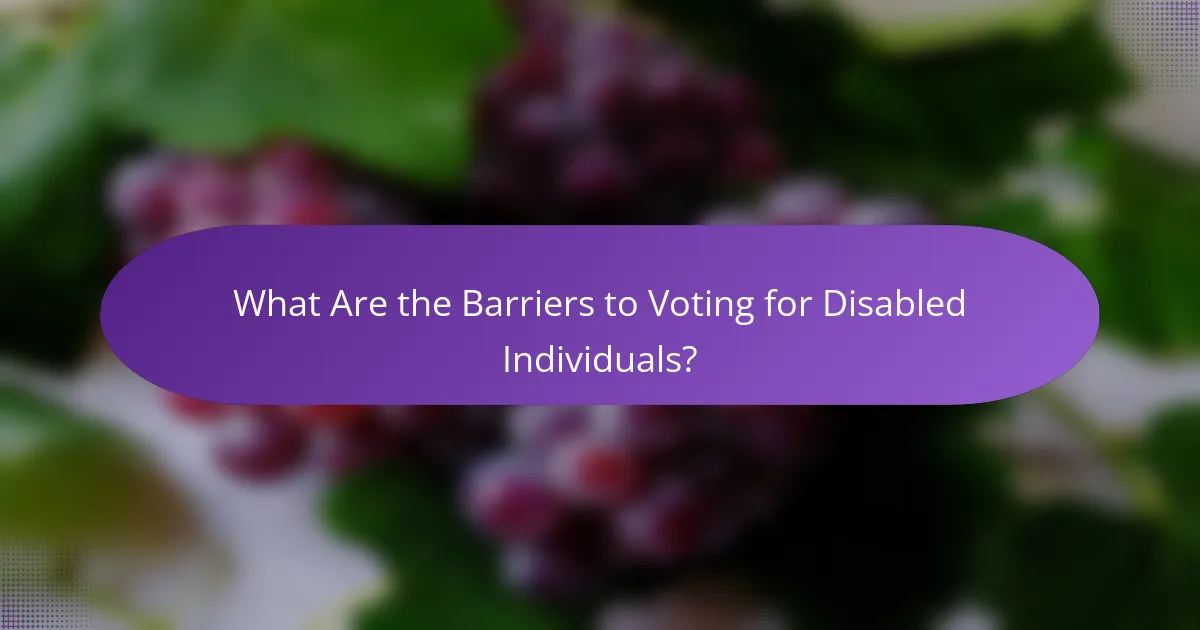
What Are the Barriers to Voting for Disabled Individuals?
Disabled individuals often face significant barriers to voting, including physical access issues and a lack of adequate support. These challenges can prevent them from exercising their right to vote effectively and independently.
Lack of Accessible Polling Places
Many polling places are not designed to accommodate individuals with disabilities, leading to physical barriers such as stairs, narrow doorways, and inadequate parking. These obstacles can discourage or even prevent disabled voters from accessing the polls.
To improve accessibility, polling locations should adhere to the Americans with Disabilities Act (ADA) standards, which include features like ramps, accessible voting machines, and clear signage. Communities can advocate for regular assessments of polling place accessibility to ensure compliance.
Inadequate Assistance for Voters
Disabled voters often require assistance to navigate the voting process, but many polling places do not provide sufficient support. This can include a lack of trained staff to help with voting machines or inadequate resources for those who need help reading ballots.
To enhance assistance, election officials should ensure that poll workers receive training on how to support disabled voters effectively. Additionally, providing resources such as accessible ballots and communication aids can significantly improve the voting experience for individuals with disabilities.
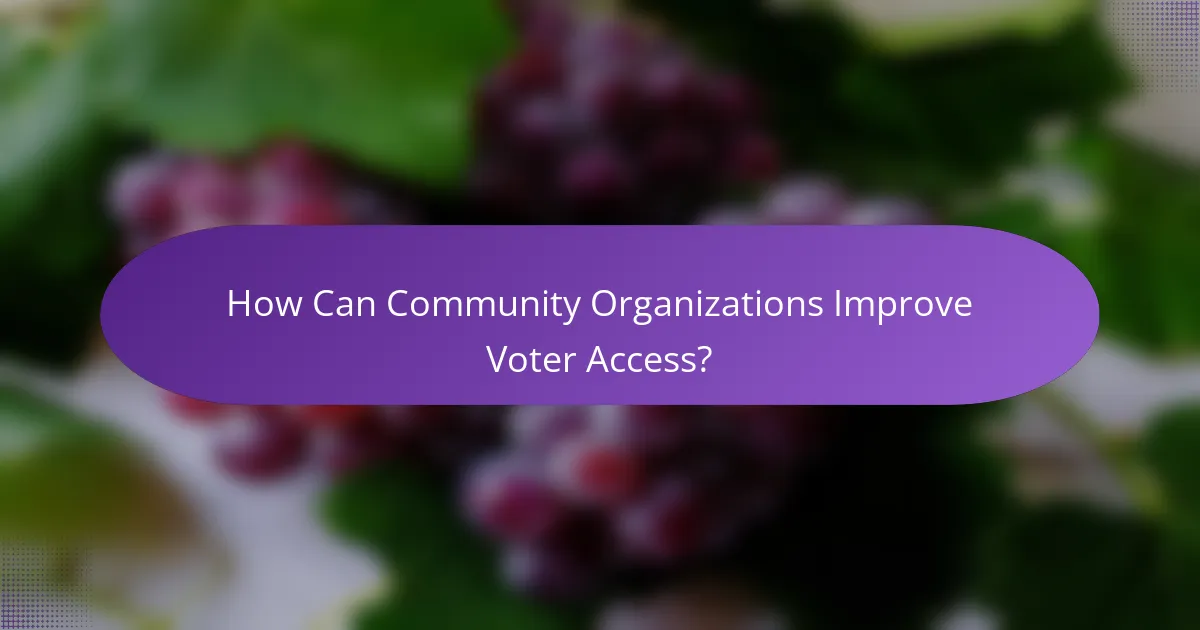
How Can Community Organizations Improve Voter Access?
Community organizations can enhance voter access by implementing targeted initiatives that address barriers to participation. These efforts often focus on education, transportation, and outreach to underrepresented populations.
Voter Education Campaigns
Voter education campaigns aim to inform citizens about the voting process, including registration, polling locations, and voting rights. Effective campaigns utilize various mediums such as social media, community workshops, and informational flyers to reach diverse audiences.
Organizations should tailor their messaging to address specific community needs, ensuring that information is accessible in multiple languages and formats. For example, using visual aids can help engage individuals with varying literacy levels.
Transportation Services to Polls
Providing transportation services to polling places is crucial for individuals who lack access to reliable transportation. Community organizations can coordinate rides through partnerships with local transit services or volunteer drivers to ensure that voters can reach their polling locations.
To maximize effectiveness, organizations should consider scheduling rides during peak voting hours and offering services to those in remote areas. Clear communication about pick-up times and locations can further enhance participation rates.

